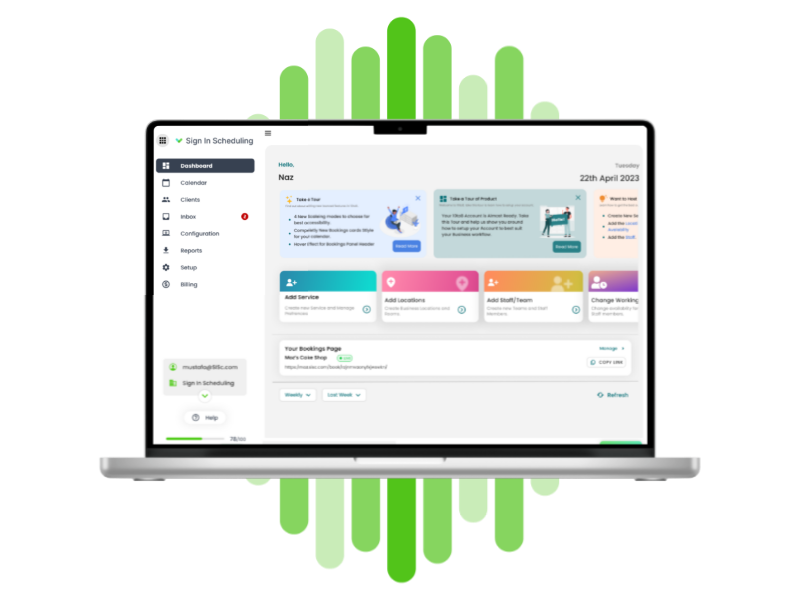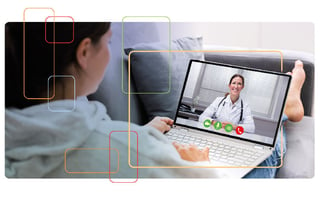Technology is everywhere. We use it at home, in the office, and even to keep up with friends or...
Decoding the data: A closer look at appointment statistics in higher education
What if I told you that you are wasting three hours every day on appointment administration tasks? This is just one of the higher education statistics that we recovered from your anonymized data.
We looked at the scheduling behavior of over 3,000 colleges and universities worldwide to see how the millions of students they serve interact with their institutions. We’ve identified the most common challenges and we are ready to offer some insight and solutions.
By reading this article, you will learn important statistics and benchmarks about automated appointment scheduling in higher education such as the ratio of student-initiated appointments, remote versus on-campus sessions, admin time savings, wasted time reduction, and more.
Let’s dive in.
Experiences and challenges straight from our customers
Challenges within the higher education sector can come in a range of different formats. We’ve seen plenty of problems tackled from finding a way to effectively utilize expensive lab equipment to encouraging students to book timely medical appointments. Here are a few of the recurring challenges that we have seen our customers experience:
- Limited availability: With large student populations and busy schedules for faculty and staff, it can be difficult to find mutually convenient times for appointments.
- Frequent no-shows and cancellations: Students often forget their scheduled appointments, leading to wasted time and resources.
- Accidental double bookings: Without a clear view into everyone's calendars, people may accidentally double book appointments, leading to scheduling conflicts and disappointment for students or staff.
- Limited communication: Without proper communication channels, it can be difficult for students and staff to schedule appointments or to receive updates on changes to their schedules.
- Inefficiency: Manually scheduling appointments can be time-consuming and prone to errors, leading to inefficiencies and wasted resources.
- Lack of flexibility: Institutions may struggle to accommodate the different needs and preferences of students and staff, such as remote appointments or even different time zones.
- Accessibility: It can be difficult for some students to schedule appointments due to mobility or other accessibility issues.
3,000 higher educations worldwide put their students and staff first in 2022
Across the UK and the US alone, almost 3,000 higher education institutions have used 10to8 to manage their appointments. Thousands of staff members and students are powering their appointments for time better spent.
.jpg?width=800&height=800&name=Higher%20education%20statistcs%20(3).jpg)
We have seen firsthand how online appointment scheduling can revolutionize the way higher education institutes handle appointments. By automating the scheduling process and providing a convenient, user-friendly platform, we’ve helped thousands overcome the challenges of appointment scheduling and improve the student and staff experience.
Up to 350% increase in student appointments
Over 93,500 appointments were booked by education organizations through 10to8. This demonstrates the growing popularity and effectiveness of online appointment scheduling in higher education.
.jpg?width=800&height=800&name=Higher%20education%20statistcs%20(2).jpg)
Some of the colleges we work with saw staggering increases of over 350% in the appointments they are taking. These higher education statistics show that institutions are actively relying on technology to manage their appointments and improve engagement with students and staff.
Slashed admin: Two-thirds of appointments were student-initiated
In 2022, students took advantage of 10to8’s online booking pages to arrange large volumes of their appointments virtually. In fact, almost two-thirds of all virtual appointments were initiated by students. Some colleges that work with 10to8 saw up to 80% student uptake of their online booking system.
.jpg?width=800&height=800&name=Higher%20education%20statistcs%20(5).jpg)
By allowing students to take control and book appointments at their convenience, you are empowering them to take ownership of their education. This can lead to increased student engagement and motivation, fewer no-shows, and reduced admin burden.
Three hours freed up each day
Staff members saw admin time slashed since adopting 10to8. Our educaton clients saw reductions of up to three hours of admin per day. This has also been reflected in the rate of no-shows – up to 83% less!
.jpg?width=800&height=800&name=Higher%20education%20statistcs%20(1).jpg)
By automating the scheduling process, staff no longer have to spend time manually scheduling appointments, following up on missed appointments, or dealing with scheduling conflicts. Instead, they can spend more time providing support and guidance to students, leading to improved student outcomes, productivity, and satisfaction.
Half and half: 50% of appointments took place on campus
While the majority of appointments were booked online, almost 50% of appointments were booked to take place on campus.
.jpg?width=800&height=800&name=Higher%20education%20statistcs%20(4).jpg)
These are the sorts of appointments 10to8 made happen for education institutions:
- Lectures,
- Private tutoring
- School introduction meetings
- Drop-in sessions with teachers
- Extra credit/help sessions
- Student medical appointments
- Equipment usage.
Student engagement is not necessarily dependent on face-to-face interactions but our data shows that half of the scolars still seek that human interaction.
What have these higher education statistics shown us?
For any colleges, universities, or education providers, looking to improve student management and engagement, we’ve learned a great deal in 2022. So, what does this mean for appointment scheduling in higher education?
1. The growth of virtual appointments in education is undeniable
The pandemic accelerated the adoption of technology in education and there’s no slowing down ever since. This makes sense, considering the prediction that ‘65% of children entering primary school today will end up working in jobs that don’t yet exist’.
As such, a greater emphasis on digital tools and resources will help streamline operations and improve the student experience.
2. Students prefer to book their appointments online
Millennials and Gen Z students are digital natives. Many don’t enjoy picking up the phone and are much more comfortable texting, using social media, or using online platforms and tools.
Considering around 76% of all consumers use mobile devices to book appointments, this plays right into the benefits of online appointment scheduling by letting students take their appointments (literally) into their own hands.
Allowing students to manage their own time, book appointments at their convenience, and avoid long wait times or delays in getting the support they need can significantly improve student satisfaction.
3. Certain aspects of learning are better face-to-face
Virtual education has certainly allowed for greater flexibility and accessibility. But it's important to recognize that certain types of learning are much better in-person. For example, while you can schedule an effective virtual classroom, hands-on learning and certain types of group work are usually better face-to-face.
Additionally, in-person interactions with teachers and peers can provide a sense of community and socialization that is difficult to replicate online. Providing a balance of both virtual and face-to-face options is essential to meet the diverse needs of students.
4. Switching to online scheduling saves hours of staff admin time
With online scheduling, staff members no longer need to spend time answering phone calls, responding to emails, or manually booking appointments. And we can only imagine what a relief it must be to get that time back!
Coupled with the fact that online scheduling can dramatically reduce no-shows and last-minute cancellations, it’s a no-brainer. Automatic reminders sent to students’ phones are — let’s face it — much more likely to be seen, decreasing the chances of missed or forgotten appointments.
Overall…
Automated appointment scheduling can solve a huge range of problems for colleges and universities. From preventing staff burnout to ensuring students can communicate effectively about their appointments, these higher education statistics show the many benefits. And we’ve seen this firsthand over the last few years.
Online appointment scheduling has proven to be a game-changer for higher education institutes during the pandemic and beyond. 10to8 provides a service that supports institutions’ move to digital adoption and gives students a tool that is easy to adopt and use. We’re very proud to say that we’ve been able to help countless schools, colleges, and universities transform their operations.
If you’d like to learn more about how appointment scheduling could benefit your higher education institution, speak to one of our scheduling specialists today. Or check out some of our success stories from our existing customers in education.






Blog comments